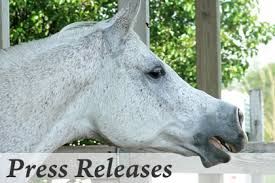Improving Transport with Scientific Evidence and Animal Welfare Legislation
- Posted by Rebecca Gimenez Husted, PhD
Dr. Malcolm Mitchell, of the Roslin Institute, and Dr. Peter Kettlewell, Silsoe Research Institute, brought a wide swath of experience in commercial animal transportation to the Equine Track at the Animal Transportation Association International conference in Vancouver in March. Although his research has been mainly in pigs and poultry–it has definite indications for horses as we seek to improve trailer design and all aspects of transport for equines.
Dr. Mitchell began his presentation with the observation that stress in transit is a major welfare issue; he pointed out that the word “WELFARE” is derived from the meaning “to travel well.” He also reminded the audience that the first published work on mass transportation of animals was documented in the Bible as Noah’s Ark, which obviously did not meet the stocking-density and many other aspects of modern requirements for animal care and safety.
Background:
There is growing global emphasis on legislation and regulations to ensure improvements in animal welfare and all aspects of animal care, transportation, and management. Good examples are the OIE and EU regulations and guidance codes, their prominence in the media, and their implementation in the 27 member states of the EU
Create a free account with TheHorse.com to view this content.
TheHorse.com is home to thousands of free articles about horse health care. In order to access some of our exclusive free content, you must be signed into TheHorse.com.
Start your free account today!
Already have an account?
and continue reading.
Written by:
Rebecca Gimenez Husted, PhD
Related Articles
Stay on top of the most recent Horse Health news with













